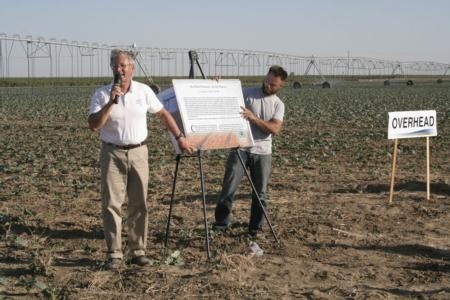
Mitchell, UC Cooperative Extension specialist in the Department of Plant Sciences at UC Davis, took Johnson to research fields and farms to show progress being made toward more sustainable production practices in California row-crop farming. Johnson turned the visit into a 1,300-word feature that included links to conservation agriculture research Mitchell has published in California Agriculture journal.
"There's a soil scientist at Berkeley, Garrison Sposito, who says it may be just once or twice in a century that agriculture has an opportunity to re-create itself in a revolutionary way," Mitchell said. "... I think that's what's happening with conservation agriculture. It's energizing for me to wake up to that every day.”
Mitchell and his colleagues are proponents of four tenants of conservation farming:
- Don't disturb the soil
- Maximize the diversity of plants, insects, fungi and microbiota
- Keep living roots in the soil
- Keep the ground covered with plant residues
Mitchell took the writer to the UC West Side Research and Extension Center in Five Points to see research plots that have been farmed continuously with conservation techniques. The beds "have not been worked in 15 years," Mitchell said. “There's more organic material going into the soil, more carbon and more nitrogen. There's more capture of water, and the shade and residue reduces soil water evaporation.”
As the years passed, the soil improved. Instead of the farm equipment needing to break up clots of compacted soil, the researchers found they were planting into soft, fine-grained earth, continuously tilled by worms and roots and microorganisms.
Mitchell learned that residues and no-till practices can reduce irrigation water needs by 16 percent, as well as cut down dust emissions and store extra carbon in the soil.